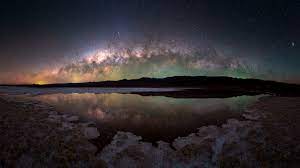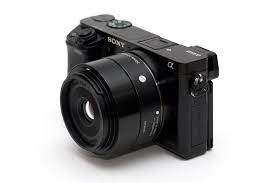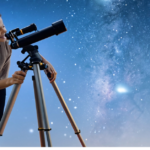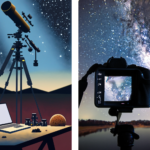Table of Contents
Astrophotography has become more popular as equipment and software have become easier to use. Space seems to be in the news more as we investigate exoplanets and learn more about the universe from the likes of the James Webb Telescope.
In this blog post, we’ll talk about the Sony a6000 astrophotography camera. Many have asked how good this camera is for astrophotography so let’s investigate.
When it comes to astrophotography, few cameras rival the Sony A6000 capabilities. But understanding how to take photos of galaxies requires more than just having high-quality gear. You also need to know about your equipment’s limitations and strengths.
In this post, we’ll discuss how you can use your Sony A6000 and get good results. Before this, we will define astrophotography and take a look at the equipment you’ll need.
Different Kinds of Astrophotography

Astrophotography is the art of taking beautiful pictures of stars, planets, and other objects in space. This includes deep-sky astrophotography, (taking pictures of nebulae and galaxies), and star astrophotography.
Wide-field astrophotography is a method to take pictures of larger areas of the night sky.
As an astronomer and photographer, you need certain equipment, such as a camera with a lens. A sturdy tripod or mount for the best stability during long exposure shots is important. It is also helpful to use timed shutter releases controlled by smartphone apps or by software on your laptop.
To take beautiful astrophotographs, you need to find a place with less light pollution.
Also, it’s important to use manual focus and RAW images if you want to take good shots. Adding a tracker will help you follow the stars over time, which will improve your results even more.
Sony a6000 Astrophotography: Camera Features and Specifications
Shop at amazon

As an Amazon associate, I get a small commission. Thanks for your support!
What do you think of cameras that don’t have screens? On paper, these devices might seem quirky or even weird. But think for a moment about the appeal of the Sony a6000. This is a small camera packed with powerful hardware and unique features. Any photographer will love this camera!
Its popular APS-C sensor can take beautiful photos at 24 megapixels or more. It has clear resolution-optimized video options (up to Full HD quality). This camera offers photographers great performance.
If you’re into astrophotography, you can be sure that the Sony a6000 is also a great choice. It can take amazing pictures even when there’s not much light.
Why Sony a6000 Astrophotography is a Good Choice
If you want to take pictures of the wonders of space at night with a camera, the Sony A6000 is your best bet. Its amazing APS-C sensor takes pictures that are incredibly clear and have a lot of detail. This is a must-have for capturing the smallest details in astronomical objects like galaxies and nebulae.
Aside from this, users are able to get a lot out of its broad ISO range of 100–25k, which is great for capturing sharp images in the dark when astro-imaging, and its lightweight design, which makes it easy to carry around.
When stargazing, if you want to take great photos of celestial objects, you need to buy equipment that works well even in difficult conditions. That’s why professional astrophotographers always use equipment like the Sony a6000, which can be used with a variety of lenses.
Different Views on Sony a6000 Astrophotography
It’s always a good idea to look at what real people who have knowledge of astrophotography think about the Sony a6000 and how well it performs in low light when taking pictures of the Milky Way or of deep-sky objects and stars.
The best opinions are always those that are based on experience and the actual results achieved by the camera. For this reason, I did some research and found the following reviews and opinions from astrophotographers who have used the camera:
First, there is this review by Raeleen Monks:
She says that she was surprised at how well the Sony A6000 performed and claims that the results were quite impressive. The camera was inexpensive, and she also looks forward to using it on her astrophotography trips again.
Another positive review is here on the A-KiwiRetrospective:
“The A6000 provides a good image and noise isn’t too serious at ISO 1600 in the RAW files”
This opinion explains that the camera works well and does not produce excessive noise. Another person was happy with the A6000!
Also, combing through the Reddit forums, I stumbled on several positive comments on this post:
“With the Rokinon 12mm f/2.0, it’s awesome.”
“I enjoy using it for shooting the Milky Way.”
And finally, another user in the above post commented:
“A6000 + 12/2 is probably one of the best crop-sensor astrophotography setups possible.”
There are quite a few enthusiastic comments there on Reddit.
In the end, the results speak for themselves, and looking at some of the images on this page taken with a Sony A6000, I think it is a respectable and inexpensive choice for astrophotography
So, there you have it, quite a few different perspectives. I didn’t find any outright negative reviews, but of course, this camera can be beaten by more expensive cameras, no doubt.
How to Use the Sony a6000 for Astrophotography
When taking pictures of the night sky with your Sony a6000 astrophotography camera, there are some things to keep in mind.
The best settings for astrophotography
First, you need to alter the settings on your camera to get the best image.
First, you should always use manual focus. The reason we use manual focus for astrophotography is to have complete control over the Sony A6000 settings.
The aperture must be set as wide as possible for astrophotography, as we are shooting in low-light conditions and need as much light to get to the camera sensor as possible. Consider using a lens that has an aperture of f/3.5 or less.
Shutter speed is very important for night sky photography and depending on your target, you will most likely need to set a long exposure time. How long should this be? Here are a few examples from my own experience:
| Object | Exposure Time |
| Stars | 20 seconds |
| Moon | 0.1 seconds or less |
| Deep-sky objects | 30 seconds to several minutes |
Adjust the ISO on your DSLR to make up for the low light. This may require some testing to get right but the Sony a6000 camera. I suggest 1600 or even 3200. Check it yourself and see what happens. You can look up the specs, but every camera is slightly different.
Don’t forget that increasing the ISO can also increase noise, and in astrophotography, we want to keep noise to a minimum since you will be stretching your raw images later, and this can also increase the noise in your image.
The most important of all camera settings is your focus, which you always want to check. Using a Bahtinov mask is something that has helped me get accurate focus. Poor focus has even ruined a night of imaging for me in the past, so it’s worth checking throughout the night.
Make sure to set your camera to RAW mode to get the best possible image quality. There is far more data in RAW files than in JPEGs, for example. You are spending hours collecting data, and you need as much as you can get, especially if you are photographing deep-sky objects that are extremely far away and very faint.
Here’s an easy-to-follow explainer video that will help you understand how to set up your camera and get the best astrophoto possible if you’re new to this:
For astrophotography, it’s important to use the right lens. Wide-field astrophotography lenses good for astrophotography include the Rokinon 12mm f/2.0 and the Sony 10-18mm f/4. Some good lenses for deep-sky astrophotography are the Rokinon (or Samyang) 135mm or other lenses in the 200–400mm range for more zoomed-in shots.
If you use a telescope, the focal length should be between 500mm and 800mm. However, for very small objects like galaxies, higher focal lengths are better because you can see more details.
Third, you must use a tripod if you want your photos to be clear and focused. The stand should be sturdy, so it doesn’t move or wobble. When you take long exposures lasting more than a few minutes, any movement will ruin your photos.
Some Reasons Why This Camera May Not Be the Best Choice
While Sony a6000 astrophotography certainly delivers in terms of quality and functionality, there’s one potential drawback worth mentioning: the absence of built-in image stabilisation technology.
Without this feature, capturing blur-free nighttime pictures may prove challenging without specialized equipment like stable tripods and stabilizing lenses. Despite these options being available to aid in steadying shots, some serious astronomy photographers may find this to be a problem.
Sony’s a6000 camera can serve as a good option for astrophotography enthusiasts hoping to snap captivating photos of the night sky. However, one major issue users may face is that its battery only survives up to roughly 360 shots per charge making prolonged exposure difficult.
Additionally, while the camera’s APS-C sensor produces images with excellent detail retention and minimal noise production, it falls short when compared to the larger full-frame sensors available.
Conclusion
The Sony A6000 DSLR camera is a good and inexpensive choice for astrophotography, especially for beginners. For more advanced astrophotographers the camera may not be the best choice and there certainly are better models but at a higher price.
Using this camera can give amazing results when used with a good-quality lens and if you do want to take photos of the night sky with this camera then it is also a good idea to have the camera modified so that it is more sensitive to hydrogen-alpha wavelengths which are present in most nebulae.
I hope the information I have gathered and presented to you here has helped you to decide whether this camera is for you. I wish you many enjoyable nights under the stars with your Sony A6000 astrophotography camera! Go get started today!







